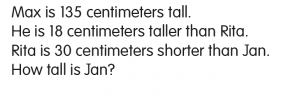Posted by kavery508 | Posted in Uncategorized | Posted on March 23, 2015
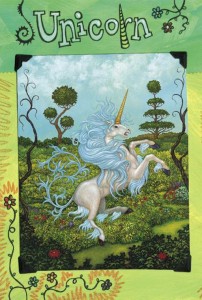 Literacy Night is coming on Friday, April 10, 6-9 PM! Floral alumni know this to be an evening of fun, games, treats, and everything reading and writing. This year’s honored guests include local illustrator and author Ralph Masiello (http://ralphmasiello.com/) and historical actress Sheryl Faye (http://sherylfaye.com/).
Literacy Night is coming on Friday, April 10, 6-9 PM! Floral alumni know this to be an evening of fun, games, treats, and everything reading and writing. This year’s honored guests include local illustrator and author Ralph Masiello (http://ralphmasiello.com/) and historical actress Sheryl Faye (http://sherylfaye.com/).
One feature of Literacy Night is the reading of original pieces of writing by students. I encourage any student from our class to participate. If your child wishes to read his/her writing (in classrooms with a group of about 9 other students), here’s what to do: 1. Select a piece of writing from home or school this year. 2. Send it in for me to OK this week. 3. I’ll send it back with any suggestions for polishing. 4. You’ll be sent a confirmation letter with room assignment and time. 5. Come and celebrate!
The success of this event is due in large part to the many volunteers who donate their time and efforts. If you can help, please use the following link to sign up, and thank you!
http://www.signupgenius.com/go/10c0d4dabaf2ba6f94-floral1
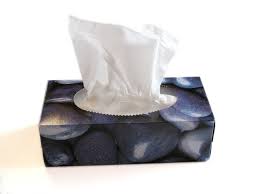 Thanks to parents for sending in Kleenex! I’ve had 2 responses, and we need LOTS more. Please send some in if you haven’t, and thanks in advance!
Thanks to parents for sending in Kleenex! I’ve had 2 responses, and we need LOTS more. Please send some in if you haven’t, and thanks in advance!
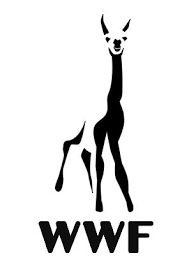 This coming Saturday at 8:30 PM, individuals and whole towns/cities will take part in Earth Hour. This now-annual event is designed to increase awareness about climate change and nature conservation world wide. Watch this video from the World Wildlife Federation and find out more at their Earth Hour website: http://www.earthhour.org/
This coming Saturday at 8:30 PM, individuals and whole towns/cities will take part in Earth Hour. This now-annual event is designed to increase awareness about climate change and nature conservation world wide. Watch this video from the World Wildlife Federation and find out more at their Earth Hour website: http://www.earthhour.org/
 Our CAFE focus now turns to Summarizing. This comprehension strategy is similar to Determining Importance in that it leaves out small details in favor of the big ideas and consequential events in a story or in nonfiction texts. We will learn to summarize narratives in terms of the main characters, problems and solutions, and changes the characters undergo on their journey. As a simple example, in Green Eggs and Ham (Dr. Seuss) the main character becomes increasingly annoyed at being pestered to try something he doesn’t want. Then he resigns out of exhaustion and frustration. Finally, he is surprised at his delight with this unusual breakfast. The following site from the VA Dept. of Ed has a terrific collection of PDFs and links you can use to have your child practice this essential skill after doing reading homework: http://wvde.state.wv.us/strategybank/summarization.html
Our CAFE focus now turns to Summarizing. This comprehension strategy is similar to Determining Importance in that it leaves out small details in favor of the big ideas and consequential events in a story or in nonfiction texts. We will learn to summarize narratives in terms of the main characters, problems and solutions, and changes the characters undergo on their journey. As a simple example, in Green Eggs and Ham (Dr. Seuss) the main character becomes increasingly annoyed at being pestered to try something he doesn’t want. Then he resigns out of exhaustion and frustration. Finally, he is surprised at his delight with this unusual breakfast. The following site from the VA Dept. of Ed has a terrific collection of PDFs and links you can use to have your child practice this essential skill after doing reading homework: http://wvde.state.wv.us/strategybank/summarization.html
 All year, students have been taught elements of good poetry and how to apply their knowledge when analyzing poems. As our final Trimester of school begins, they will now be taught how to write meaningful poems of their own. They will learn how to choose topics that they feel strongly about; how to write with a mix of thoughts, feelings, and carefully chosen words; how to replace uninteresting text with better words and similes; and how to edit the structure (lines, repetition, etc.) of their poems until it looks and sounds right. Here is a cool site for you and your child to view at home, where children’s poetry is read aloud and you can learn more about poets and their craft: http://www.poetryarchive.org/childrensarchive/home.do
All year, students have been taught elements of good poetry and how to apply their knowledge when analyzing poems. As our final Trimester of school begins, they will now be taught how to write meaningful poems of their own. They will learn how to choose topics that they feel strongly about; how to write with a mix of thoughts, feelings, and carefully chosen words; how to replace uninteresting text with better words and similes; and how to edit the structure (lines, repetition, etc.) of their poems until it looks and sounds right. Here is a cool site for you and your child to view at home, where children’s poetry is read aloud and you can learn more about poets and their craft: http://www.poetryarchive.org/childrensarchive/home.do
 As Chapter 7 comes to a close, students will be asked to apply their skills with measurement, reasoning, modeling, and addition/subtraction as they solve real-world problems. Consider this problem from the MIF Student Workbook:
As Chapter 7 comes to a close, students will be asked to apply their skills with measurement, reasoning, modeling, and addition/subtraction as they solve real-world problems. Consider this problem from the MIF Student Workbook:
Notice how the answer isn’t obvious at first. Students really need to ask themselves “What is being asked?” in the problem. Then they need to break it down into steps and model each part (in this case, two comparison bar models would do nicely) and do the appropriate operation (add/subtract) accurately to get to the final answer. While the answer is important of course, it is even more important that students develop this understanding of how to model and solve problems so they can apply it in all future mathematics.
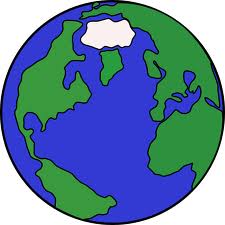 Our Trimester 3 mapping goals include locating and identifying all continents, oceans, and major physical features of the U.S. such as the Mississippi, Rocky Mountains, Appalachians, Great Lakes, etc. We will make a game out of identifying these using physical maps, political maps, and Google Earth.
Our Trimester 3 mapping goals include locating and identifying all continents, oceans, and major physical features of the U.S. such as the Mississippi, Rocky Mountains, Appalachians, Great Lakes, etc. We will make a game out of identifying these using physical maps, political maps, and Google Earth.
 The final science topic of the year that we will explore is States of Matter. Through a combination of hands-on activities, investigations meant to teach the scientific process of inquiry, and multimedia approaches, students should develop an understanding of matter and be able to identify solids, liquids, and gases by their observable properties. This week they will investigate solids, liquids, and gels by manipulating examples of each in order to learn about their properties. Here’s a link to our district’s science program for this topic, with objectives and content defined: https://www.fossweb.com/delegate/ssi-wdf-ucm-webContent?dDocName=D568667
The final science topic of the year that we will explore is States of Matter. Through a combination of hands-on activities, investigations meant to teach the scientific process of inquiry, and multimedia approaches, students should develop an understanding of matter and be able to identify solids, liquids, and gases by their observable properties. This week they will investigate solids, liquids, and gels by manipulating examples of each in order to learn about their properties. Here’s a link to our district’s science program for this topic, with objectives and content defined: https://www.fossweb.com/delegate/ssi-wdf-ucm-webContent?dDocName=D568667

